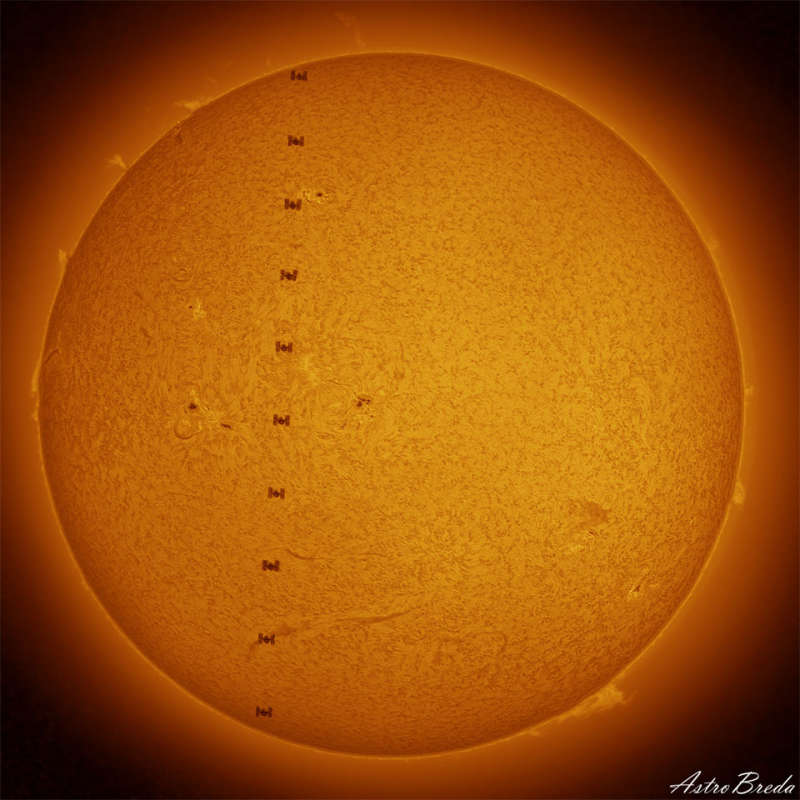
|
Credit & Copyright: Pau Montplet Sanz
Explanation:
Typically, the International Space Station is visible only at night.
Slowly drifting across the night sky as it orbits the Earth, the
International Space Station (ISS) can be seen as a
bright spot about once a month from many locations.
The ISS
is then visible only just after sunset or just
before sunrise because it shines by reflected sunlight -- once the
ISS enters the
Earth's shadow, it will drop
out of sight.
The only occasion when the
ISS is visible during the day is when it
passes right in front of the Sun.
Then, it passes so quickly that only cameras
taking short exposures can visually freeze the
ISS's silhouette onto the background
Sun.
The
featured picture
did exactly that -- it is actually a series of images taken a month ago from
Sant Feliu de Buixalleu,
Spain
with perfect timing.
This image series
was later combined with a separate image highlighting
the texture of the active Sun which included several
Sun's prominences around the edge.
Celestial Surprise:
What picture did APOD feature on your birthday? (post 1995)
|
January February March April May June July August September October November December |
| ||||||||||||||||||||||||||||||||||||||||||||||||
NASA Web Site Statements, Warnings, and Disclaimers
NASA Official: Jay Norris. Specific rights apply.
A service of: LHEA at NASA / GSFC
& Michigan Tech. U.
Based on Astronomy Picture
Of the Day
Publications with keywords: ISS - Sun
Publications with words: ISS - Sun
See also:
- APOD: 2025 December 7 Á The Sun and Its Missing Colors
- The ISS Meets Venus
- APOD: 2025 March 16 Á Venus and the Triply Ultraviolet Sun
- Galaxies in Space
- APOD: 2025 January 5 Á Rocket Launch as Seen from the International Space Station
- APOD: 2024 September 2 Á A Triangular Prominence Hovers Over the Sun
- APOD: 2024 August 18 Á A Solar Prominence Eruption from SDO
